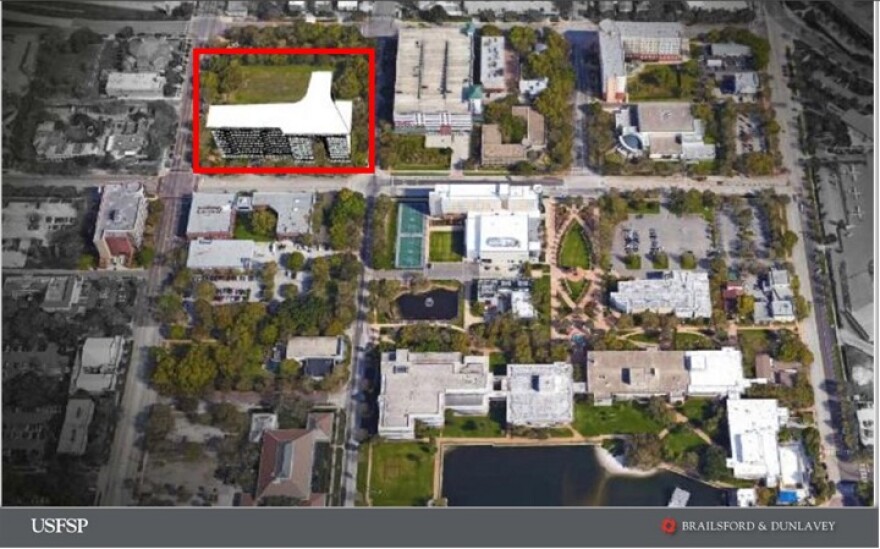Students are moving in this week to their homes for the school year at the University of South Florida.
While there are a number of new halls in "The Village" opening on the Tampa campus, St. Petersburg is packed beyond capacity, with 104 students living in a nearby hotel and apartment complexes that the university reached agreements with over the summer.
That could change as early as fall 2019, as a USF Board of Trustees committee voted Thursday to approve a new 552-bed, ten-story residence hall for the St. Pete campus.
"We feel that this new residence hall will enhance student life," said USFSP Regional Chancellor Sophia Wisniewska. "More importantly, it will allow us to attract, retain and graduate students for whom this residence hall on campus is critical. So I think it impacts student success, academics and our reputation as an institution."

The hall is tentatively planned to be on 6th Avenue South, between 3rd and 4th Street South. It would include a 400-seat, 15,000-square-foot dining facility and 21,135-square-foot conference center on the top floor.
Currently, the St. Pete campus' housing occupancy is listed at 133 percent, with 722 students occupying two residence halls and rooms rented by the University in a nearby Hilton.
In addition, 18 students will be staying at apartment complexes within about a half mile of the campus that USFSP reached agreements with. Many downtown St. Pete complexes won't allow students to live there, if the students can even afford the rents.
USFSP officials are projecting 4 percent growth in full-time enrollment over the next eight years, meaning more than 4,200 students will be enrolled by 2025, up from the 2,944 who started class last fall.
The new hall would be built under a public-private partnership (P3), similar to the agreement entered into with developer Capstone-Harrison for the $133 million housing village on USF's Tampa campus that should be completed by fall 2018.
Under the 40-year contract, collegiate housing builder EdR will assume the cost of construction, financing risk for the project, as well as ongoing facilities management. The university will receive all cash flow after paying off its debt with EdR and other expenses.
It will also get annual reimbursements from EdR for Residence Life and IT services, as well as one-time contributions for parking and predevelopment costs.
"I don't think we could have done it any other way," Wisniewska said. "With a P3, we have a ready partner who will assume the expense of the construction, the risk, as well as the future maintenance -- it's a win-win."

In addition, food services company Sodexo will be financially responsible for the operations of the dining hall and conference center, with the university receiving commissions and additional funds from the company for the construction.
The proposal moves on to the full USF Board of Trustees, which is meeting on the St. Petersburg campus next month. If approved there, it will go to the state Board of Governors in November.
Trustees on the Strategic Initiatives Committee also heard a presentation regarding a possible on-campus football stadium.
It was the same study presented to reporters last week by Athletic Director Mark Harlan and USF Vice President for Administrative Services Calvin Williams.
“This checks the box, in my mind, answers the mail back to the Board of Trustees on the possibility of a stadium on the University of South Florida (campus)," Williams told the committee. "This is very, very preliminary, the cost that we provided you (around $200 million) is based upon today’s cost. What’s next – financial strategy, fund-raiser feasibility study and those are now included in the President’s goals.”
However, as he did last week, Williams also said that any construction would be at least five to seven years off.
The Committee did not take any action on the study.




